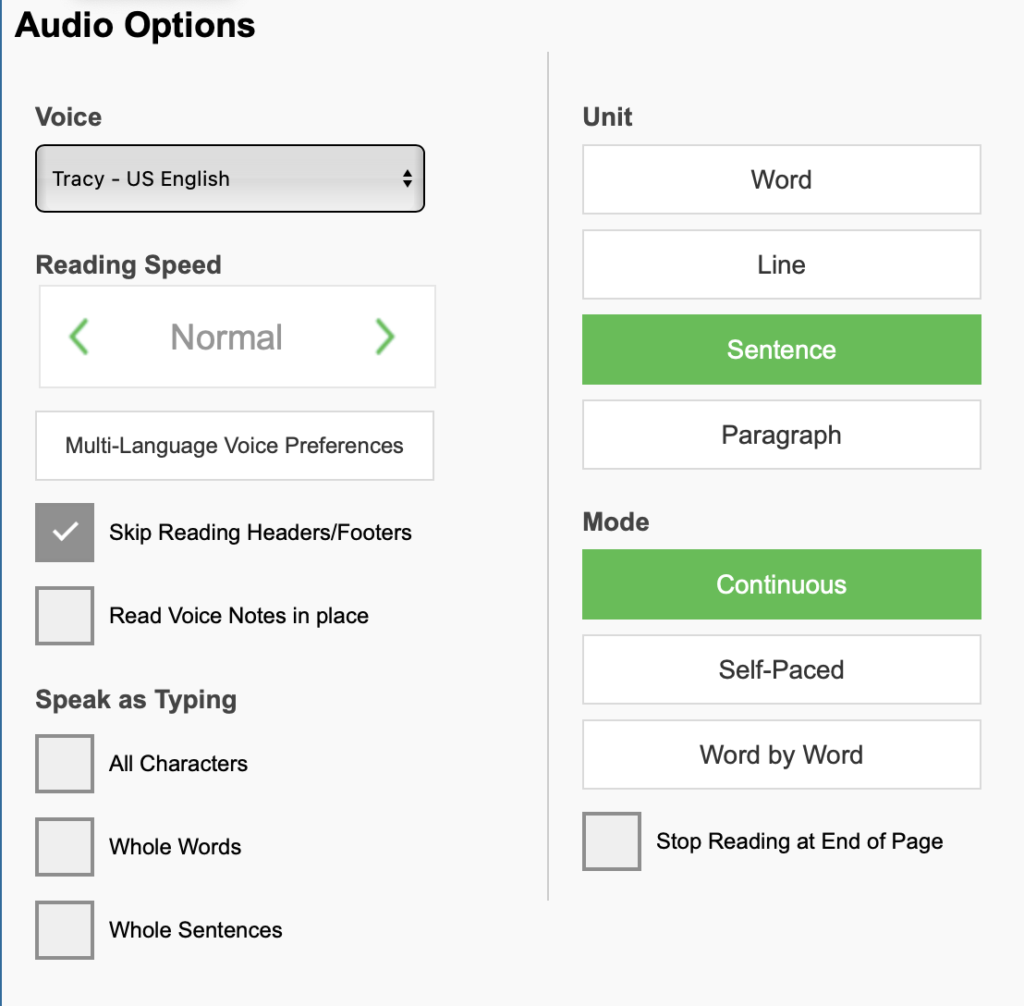Kurzweil 3000 is a text-to-speech software that emphasizes reading comprehension through a multi-sensory approach. When a user uploads a PDF document to Kurzweil, the software is able to transform the text into a customizable audio-track, change the font of the text to an OpenDyslexic font, and more.
Text-to-Speech Features
For most of history, reading was an activity only accessible through the combination of physical page and eyesight, which has prevented the reading comprehension of individuals with Attention Deficit Disorder, Autism Spectrum Disorder, and more. The invention and popularization text-to-speech software has made the activity of reading more accessible to a large amount of people. According to the Kurzweil 3000 website, the result of this technology is that “students at every reading level can learn from the same materials—allowing them to further their academic learning as they improve their literacy skills.”
Kurzweil’s text-to-speech tool features dozens of customizable options, including speed of speech, language of speech, as well as the units and modes of the speech. By allowing the user to have control of the way the content is read back to them, the software is able to be used by individuals with a wide range of capabilities. This means that these features can also be used by individuals without disabilities to improve their reading comprehension. Many colleges, including Pratt, allow students to have access to the Kurzweil software on request, without proof of disability.

Visual Features
In addition to the text-to-speech features that Kurzweil 3000 offers, there are also a variety of visual features built into the software that can benefit individuals with visual impairments and dyslexia. Some of these features include the ability to zoom in, change the background color, change the font, and add notes to the document. Again, the adaptability of the software makes it appealing to a diverse group of users. For example, even if a user may not find the magnifying feature helpful, they might benefit from being able to highlight and take notes on their digital document.
Kurzweil also supports the linking of outside dictionaries, picture dictionaries, thesauri, and reference tools, within the text of the PDF document to help improve reading comprehension. This feature can not only benefit the reading comprehension of individuals with learning disabilities, but also improve the reading experience of anyone who isn’t familiar with certain terms used in the document.
Models of Disability
The Kurzweil 3000 software functions under the social model of disability because it can be helpful to both individuals with and without disabilities, implying that bad design impacts everyone, and that everyone can benefit from good design. Kurzweil also doesn’t market itself a tool designed for a specific group of people or a specific type of disability. Its flexibility and utility also works within the framework that disability is a normal part of life that many people cannot change about themselves. Instead of medicalizing disability and implying that the user needs to change themselves in order to improve their reading comprehension, Kurzweil provides multiple features that can improve the reading experience of any individual. Software like Kurzweil should be standard at K-12 schools, universities, and libraries, because of its ability to benefit reading comprehension and experience.

